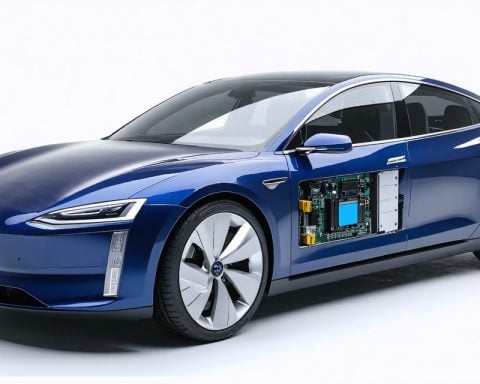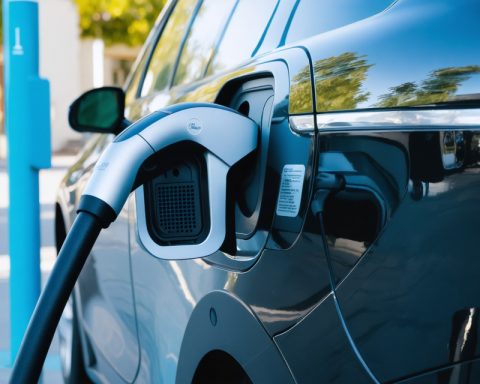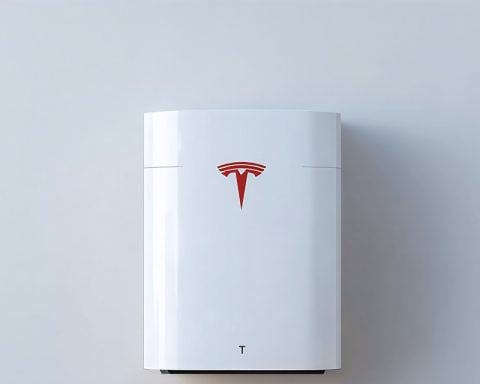- The electric vehicle (EV) battery recycling market is projected to exceed $3.47 billion by 2031, growing at 35.3% annually.
- Recycling EV batteries recovers valuable metals, reducing the need for raw material mining and promoting eco-friendly practices.
- The transition to a sustainable resource cycle aligns with increasing demands for environmental stewardship.
- Challenges include high costs and complex processes, alongside concerns about the longevity and safety of refurbished batteries.
- The push for zero-emission vehicles heightens the need for effective recycling solutions, supported by evolving regulations.
- Asia Pacific is expected to lead advancements in battery recycling through technological innovations and collaboration.
- Recycling efforts contribute to cleaner air and pave the way for a sustainable future where waste becomes progress.
The world of electric vehicles (EVs) is not just about futuristic rides and zero emissions. An intense dance happens behind the scenes, where discarded batteries whisper secrets of sustainable futures. These powerhouses of metal and energy, when recycled, unlock a treasure trove of valuable materials. It’s a transformative rush that experts predict will catapult the electric vehicle battery recycling market to over $3.47 billion by 2031, growing at an electrifying 35.3% annually.
Picture this: as more EVs glide silently through our streets, the need to responsibly manage their aging heartbeats—those hefty batteries—becomes paramount. They are teeming with rare metals ready to be repurposed, a move that doesn’t just promise eco-friendly practices but also curbs the relentless mining for raw materials. This circularism helps shape a sustainable resource cycle, answering the growing call for environmental stewardship from consumers and stakeholders alike.
Yet, the path to sustainable battery recyclables is paved with challenges. High costs and intricate processes can deter large-scale adoption. Add to this the uncertainty around the potential longevity and safety of refurbished batteries, and the picture muddles. However, the drive for zero-emission vehicles accelerates the urgency, and optimistic advancements in legal structures are lighting the way in emerging markets.
Asia Pacific, with its innovation centers and fast-growing markets, is predicted to lead this charge, driven by tech advancements in recycling and collaborative efforts among stakeholders. As the world taps into the hidden gold within EV batteries, it opens doors not only to cleaner air but also to a new era of sustainability—where yesterday’s waste fuels tomorrow’s progress.
Unlocking the Future: The Revolution in Electric Vehicle Battery Recycling
Understanding the Importance of EV Battery Recycling
Electric vehicles (EVs) are at the forefront of modern transportation, promoting reduced emissions and a shift towards environmentally friendly practices. However, the sustainability of EVs hinges on effectively managing and recycling their batteries—complex systems packed with valuable metals like lithium, cobalt, and nickel. As the electric vehicle battery recycling market is projected to hit $3.47 billion by 2031, with an annual growth rate of 35.3%, this sector is poised for a transformative evolution.
How-To Steps & Life Hacks for EV Battery Recycling
1. Initial Sorting and Disassembly: Batteries are collected and disassembled to separate valuable materials. Companies like Tesla and BMW have automated these processes to increase efficiency.
2. Mechanical Processing: The separated materials undergo processes such as shredding and crushing to break down the cells further.
3. Hydrometallurgical Process: This involves using chemical solutions to recover metals, which is more sustainable compared to traditional methods.
4. Pyrometallurgical Recovery: High temperatures are used to extract metals directly. While effective, this method is energy-intensive.
5. Second-Life Applications: Some components or whole batteries can be repurposed for stationary storage or other uses, prolonging their lifespan.
Real-World Use Cases
– Automotive Giants: Companies like Nissan and GM are investing heavily in recycling facilities to reclaim raw materials from old batteries.
– Energy Storage Solutions: Retired EV batteries are finding new life in home energy storage systems, reducing the need for new battery production.
Market Forecasts & Industry Trends
– Asia Pacific Dominance: The region’s commitment to tech advancements and collaborations places it at the forefront of battery recycling, expected to spearhead industry growth.
– Legislative Support: Emerging markets see growing regulatory frameworks encouraging battery recycling, which is critical for market expansion.
Reviews & Comparisons
– Recycling Technologies: While hydrometallurgy is praised for its lower environmental impact, pyrometallurgy remains cost-effective for high-volume operations.
Controversies & Limitations
– Economic Viability: High operational costs and intricate processes pose significant barriers to large-scale adoption.
– Safety Concerns: The safety and longevity of refurbished batteries remain uncertain, necessitating more rigorous testing.
Features, Specs & Pricing
– Recycling Facilities: These facilities vary significantly in cost depending on their processing capacities and the technologies used.
Security & Sustainability
– Environmental Protection: Improved recycling processes contribute significantly to reducing environmental hazards caused by improper disposal.
– Circular Economy: Recycling supports a sustainable cycle by reducing dependence on mining for raw materials.
Insights & Predictions
– Growth in Emerging Markets: As infrastructure develops, new markets will become increasingly significant players in the recycling space.
Pros & Cons Overview
Pros:
– Reduces environmental impact
– Supports circular economy
– Decreases dependency on raw material mining
Cons:
– High initial costs
– Complex recycling processes
– Safety and longevity issues of recycled batteries
Actionable Recommendations
To tap into this burgeoning market, consider investing in recycling technologies with lower environmental footprints. Collaborate with local governments to align with regulatory changes, paving the way for accelerated adoption and development in recycling processes.
For more information on EV advancements, industry trends, and sustainability initiatives, visit the official websites of industry leaders like Tesla and BMW.
By embracing these strategies, stakeholders can foster a more sustainable and economically viable future.













